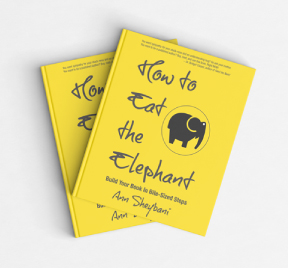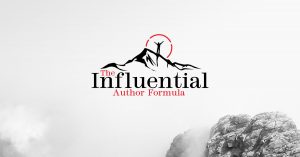Writing
Which comes first: the blog content or the book?
November 16, 2020
I talk to a lot of strategic entrepreneurs. They already produce written content–mainly blog posts or newsletters–and they’re wondering if they should be focused on writing posts with the sole intention of creating book content.
I love people who are into repurposing written content. It’s just so smart.
I thought I’d answer that very question right here, in case you’ve been wondering the same thing.
When Walt and I began writing blogs way back in the day, we weren’t writing for business. Walt was just sharing his thoughts, and I was looking to create an author’s platform for a book I was working on at the time.
Basically, we just started writing about stuff that interested us.
Walt wrote about philosophy and adventure and the desire for more space in his life. I wrote about books that had changed my life.
After a few years, themes arose for each of us. We didn’t intend to write about these things, they just presented themselves.
And here’s something crazy interesting, at least to me: We each write about the same seven things over and over again. Everyone has about seven topics they think about, write about, and talk about. These topics aren’t universal; they’re unique to the author. I’ve found this to be true time and time again.
Eventually, Walt decided to take his blog content and turn it into a book. He identified the themes—there were, you guessed it, seven of them—and then he created a structure around them. (I like to call these themes drawers. You take a blog post and then you stick it into its drawer.)
These themes or drawers or whatever you want to call them started to look like the steps one took to get a big result—the creation of a life that mattered, in Walt’s case.
From this book, Journeys on the Edge: Living A Life That Matters, sprung a coaching practice because it just so happens that other professionals wanted to create a life that mattered too. They wanted the freedom, space, and sense of purpose Walt described in his book.
(My book, How to Eat The Elephant: Build Your Book in Bite-Sized Steps, by the way, wasn’t composed of blog content; a six-week course I’d created served as the starting material instead.)
All this goes to say that Walt and I approached this blogging thing randomly. There was no great strategy behind it all. We let the topics find us. We only made something of these topics once they revealed themselves to us. There’s a lot to recommend this approach.
Now, you can also go about this in the opposite manner. You can create a book outline and write to it. Meaning, you can determine the big result you help your clients achieve, then list the steps necessary to achieving that thing.
If the big result is being able to retire comfortably without fear you’ll end up a ward of the state, for instance, what are the seven steps necessary to get there?
Maybe the ability to retire is dependent upon having the right insurance.
I could write at least 10 pieces on different insurance policies and their pluses and minuses. Why you want to have each. What horrible things could happen, do happen, when you don’t.
Maybe it’s diversifying your investment portfolio so a stock crash doesn’t wipe you out.
Again, I could write at least 10 pieces on bonds or indexing or real estate holdings. Why you want to do this. What horrible things could happen, and do, when you don’t.
Anyway, I’d go and list the seven steps, and then create sub-headings for each of those topics.
Those sub-headings, they’re a blog post, or a series of blog posts, depending on how long-winded you want to be.
When you write to an outline, you’ve got yourself the perfect starting material for a book AND a seven-week course AND a full-day workshop.
There are benefits to being this strategic. You don’t write random stuff. You can basically drop it into a template, add an introduction and a conclusion at the end, and revise it a bit until you’ve got a book…
The negative? You may forget to insert personal stories. You can go off on a rant about insurance and forget to include a story about someone you know who had a health crisis and ended up having to put off retirement by 10 years. Or about the dude who saved his home because he began indexing instead of day trading. Whatever it is.
If you’re clear on your big result, and you know your steps, then writing to an outline seems pretty damn smart to me.
If you’re still unclear, if you’re writing your way to it, then let yourself write your way to it without thought to an outline. You can impose a structure on your material later on.
Hope this helps.



